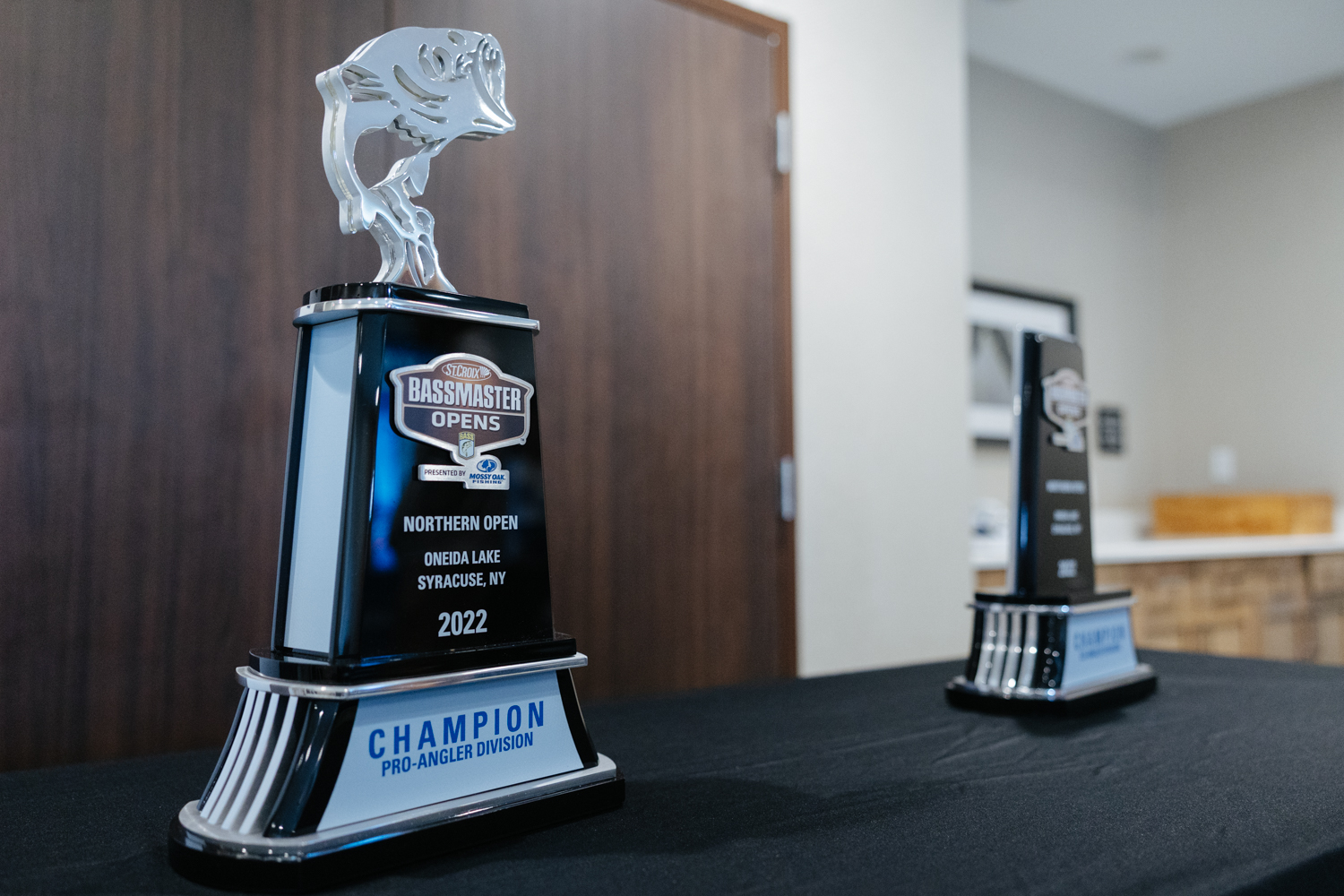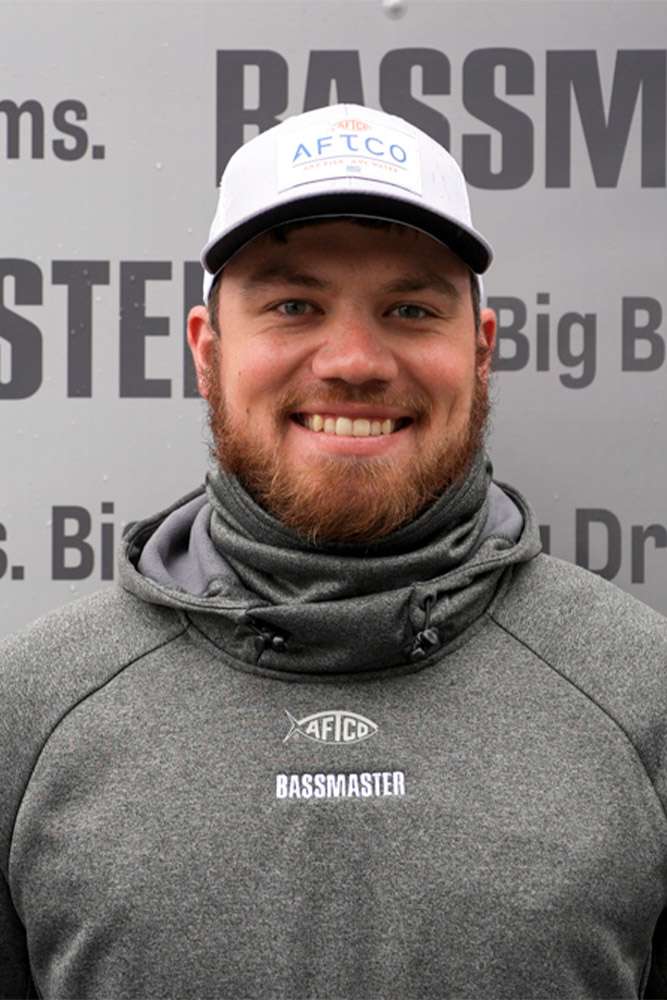
Since winning the 2021 Bassmaster Open on Oneida Lake, Bill Perkins has been somewhat of a celebrity around his home state. The Rochester, N.Y., native has had friends, competitors and strangers alike reach out and congratulate him on the victory.
“People still come up and say stuff to me about it,” he said. “It was awesome to be able to lift that trophy for the local guys. It was cool to go into the bait shop and talk to guys. Thankfully all the guys around here are super competitive and that is a large part of how I earned that trophy.”
Now, Perkins is ready to see if he can find magic again and repeat as champion at the 2022 St. Croix Bassmaster Northern Open at Oneida Lake presented by Mossy Oak Fishing.
“I’m still a dad. Still a working guy. So I just want to give it my all and get a few good bites and maybe make a run at it again,” Perkins said. “Just kind of an even-keeled confidence (coming into it) and knowing it is going to take a lot of hard work.”
This year’s trip to Oneida is three weeks earlier than it was in 2021, but many of the same ingredients are present that helped Perkins succeed.
“It seems like it is pretty standard postspawn stuff and early summer patterns. I wouldn’t say it was too much different than how it was setting last year,” Perkins said. “There was a huge mayfly hatch and there are a lot of larvae floating in the lake. And it doesn’t look like we will have the wind we had to put up with last year. It is setting up the same as it usually does.”
With the smallmouth in a postspawn phase or already in their summer patterns, many anglers have reported finding them in all depths of the water, from 3 feet of water all the way out to 25 feet. This has led to conflicting reports of success, with some anglers saying practice was productive while others will enter the tournament scratching their heads.
Bassmaster Elite Series pro Chad Pipkens has made several trips to Oneida in his career, and he believes there will be plenty of bass caught during this event.
“The fish are super healthy,” the Michigan native said. “They have been getting bigger every time we come. The fishing is changing a lot. The grass is different this year, and the fishing is going to be really good. You are going to see a lot of limits and a lot of really nice fish. You’ll see a mix of fish around rock, and there are schools in the grass too.”
While Pipkens located a couple late spawners, the bass he will be targeting have been done spawning for a while and are feeding up.
“There are perch fry around and gobies in the lake and shad,” Pipkens said. “There is plenty to eat. There are big perch and a lot of juvenile perch as well. There will be a mix of fish caught from a foot to 30 feet of water.”
A cold front also blew through during practice, bringing wind and rain to end prefishing. Calmer conditions are predicted on the backside of the front, a stark difference from the heavy winds that made life difficult for anglers last season.
For Perkins, this particular front may have come through at the perfect time.
“That front came through almost timely. It shut them down, and now they have to be coming back on. That no wind is tough out here though,” Perkins said. “Everyone kind of resents being on this lake because it gets saucy and hard to fish, but the wind does help and the smallies seem to feed more. When it is slick calm, I know everyone isn’t going to get their gear torn up, but it might make for a tougher day. Hopefully they are gearing back to bite. The last couple days of practice have been pretty tough.”
The one thing that seems to be consensus, however, is with bass spread out between all depths, this tournament won’t likely be a one-spot deal. There are a wide range of depths the bass are holding on.
“Practice has been all over the place,” Canadian pro and Opens champion Coop Gallant said. “I think this tournament could be won in a mixture of shallow, the mid-range in 8 to 12 feet or out deep. There are fish basically in 1 feet to 25 feet of water. You are going to have to move around a whole lot and fish a bunch of different zones. If you have one area you can hunker down in, put your head down and get a few bites that will be the ticket.”
Pipkens will be trying a little bit of everything as well and trying to figure out where they will be based on the conditions. Meanwhile, Michigan pro Garrett Paquette said he didn’t find one single spot that he needs to get to on tournament day.
“I have learned there are fish on every inch of this lake,” Paquette said. “I haven’t found a concentration of fish or a place I am just dying to get to. I feel like it is a lake where you can fish anywhere, you just have to make the right presentations and you can catch those 3-pound or better bass. The plan is to hit 50 to 100 spots.”
While largemouth are still prevalent in the lake, and kickers will be important if anglers can find them, Perkins and Paquette believe the best way to win will be with all smallmouth.
“In years past, largemouth fishing was a good option because they were 3 pounds or better most of the time,” Paquette said. “Now the smallmouth are that size. For me, I might as well smallmouth fish. It is something I am more comfortable with and you will still have a chance at the quality fish.”
Although the bass are spread throughout the water column, Perkins said some areas of the lake will draw more traffic than others. Similar to any other 200-plus boat tournament, there will be some give and take.
“There was an 80-boat tournament the other day and a few of my buddies said it fished small,” Perkins said. “It does spread out around Shackelton Shores and there is a ton of deep stuff. So it can spread out, but it does fish small in a 200-boat field. You have to fish in a crowd, you just have to get used to it. There are a few community hole areas that will hold 10 to 20% of the field.”





